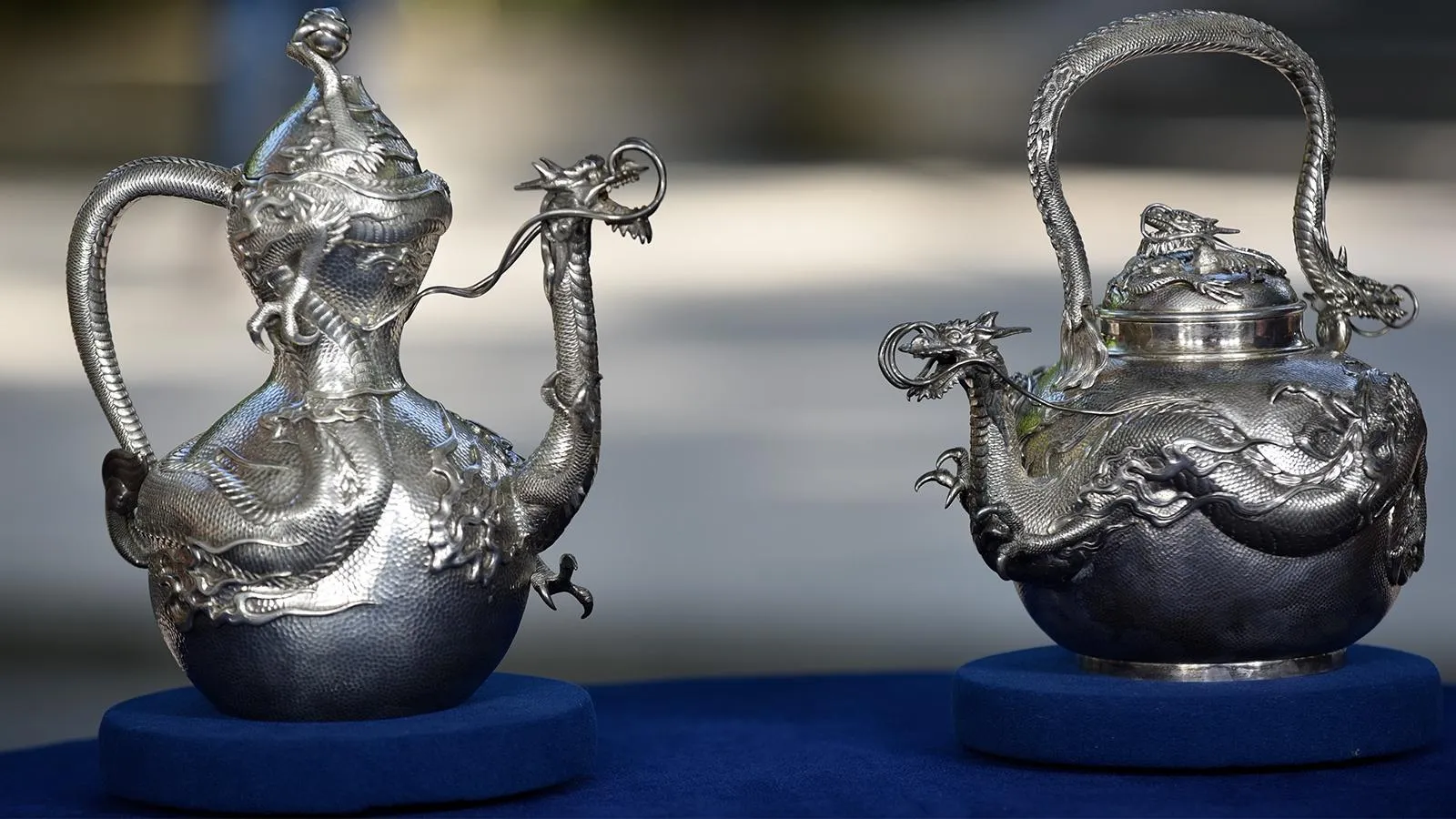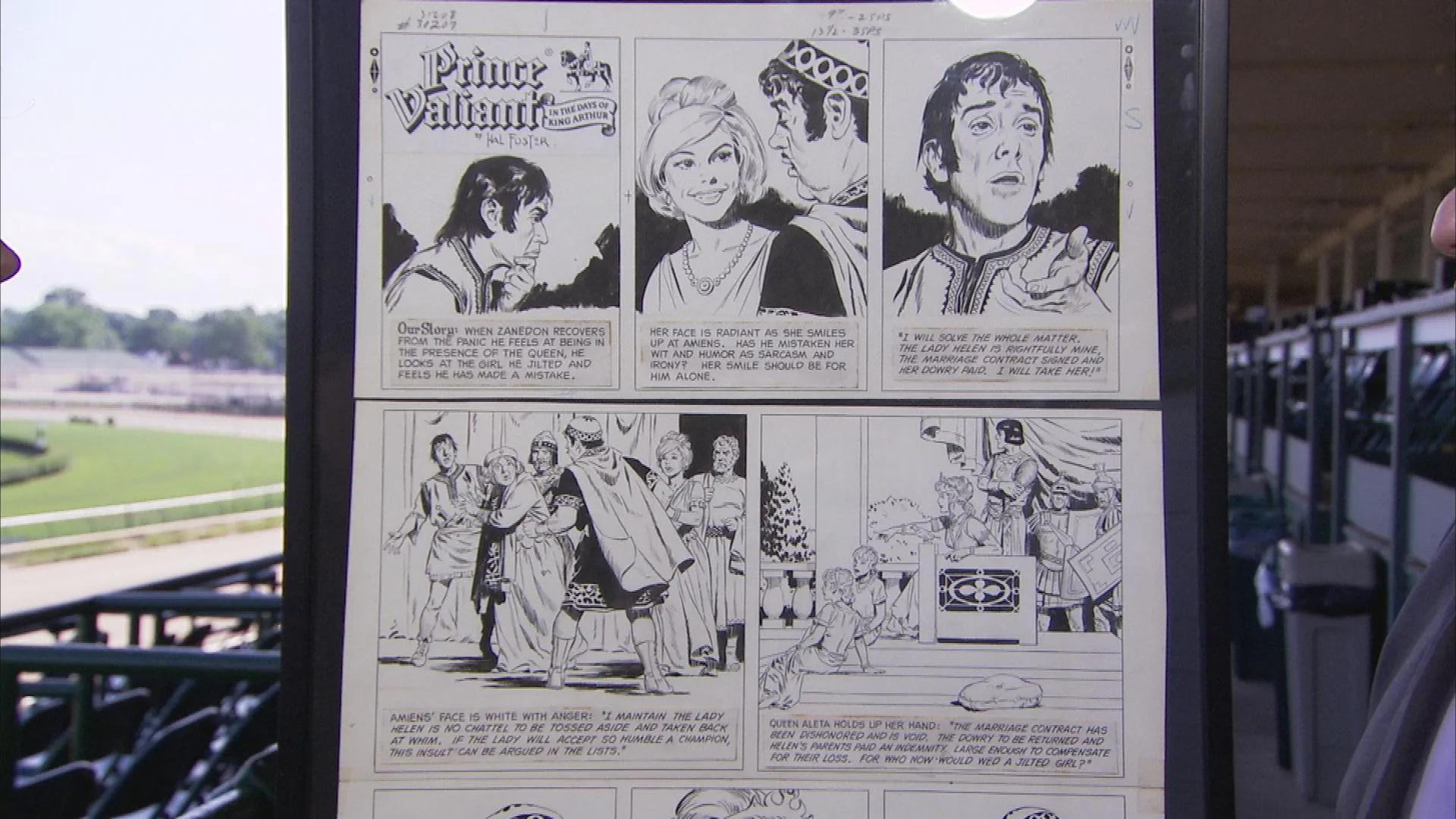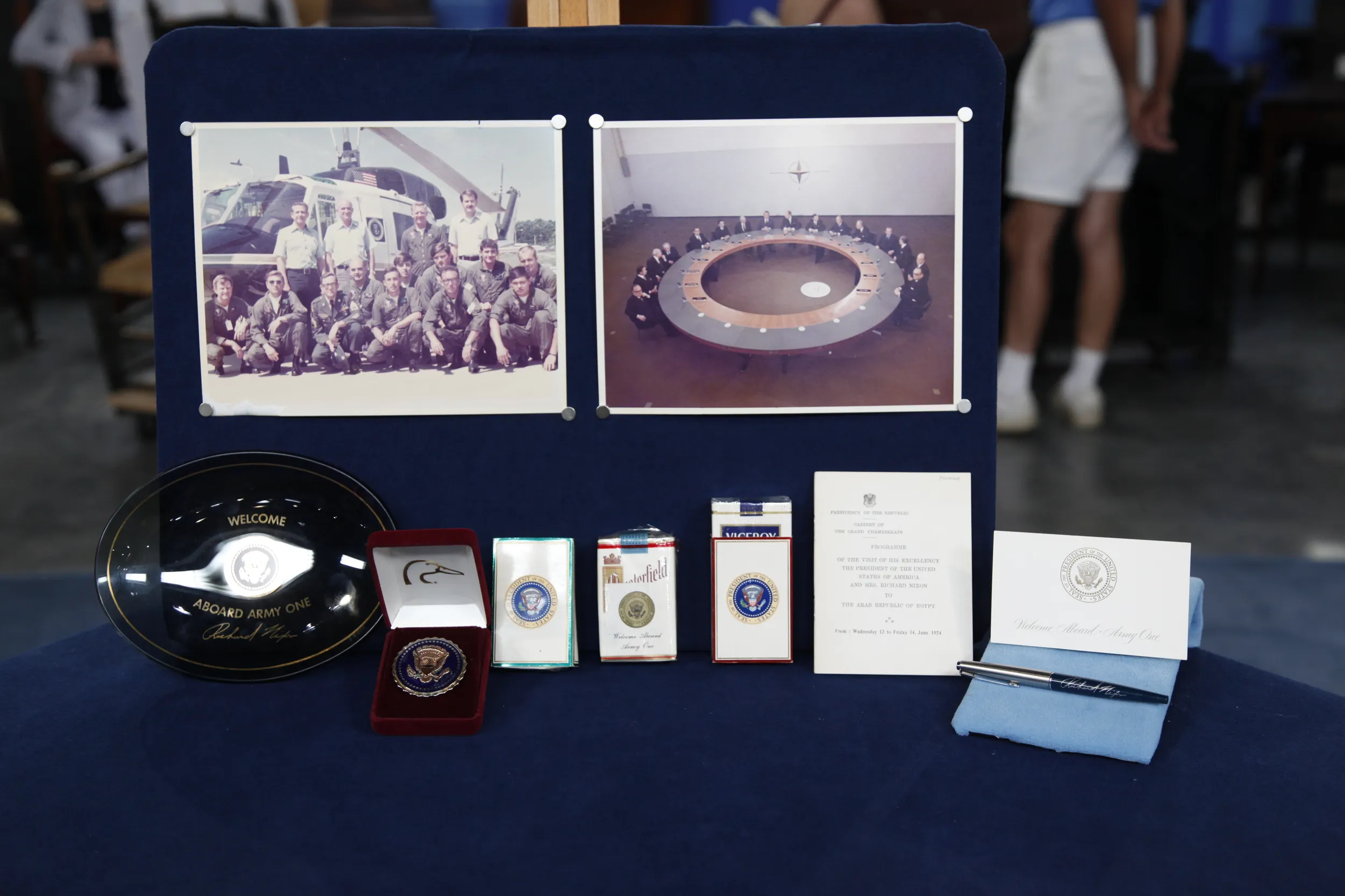GUEST: These were gifts from my parents. I was born and raised here in Sacramento. And these pieces are by a local artist named Roy De Forest.
APPRAISER: So when did your mother gift these to you?
GUEST: They downsized about ten years ago, so I would say I came into them about eight years ago. The first piece was acquired, the one closest to you, in about 1978. And this one later, in the mid '80s, I think around 1984. They purchased them from a really fun gallery that's no longer there, in Folsom, California, from a woman named Adeliza McHugh. She followed and tried to nurture the careers of a lot of U.C. Davis artists. And there's a story-- I don't know if it's true-- but that her patron was Vincent Price.
APPRAISER: What was the name of the gallery?
GUEST: The gallery was the Candy Store.
APPRAISER: Okay, the Candy Store Gallery was very well-known for holding exhibits of U.C. Davis faculty. What did your parents pay for them when they bought them?
GUEST: They paid about $800 each.
APPRAISER: Okay. You brought in two examples by Roy Dean De Forest, who was born in Nebraska in 1930, but spent the bulk of his career in California, most notably at U.C. Davis, where he taught from 1965 until 1992, and eventually passed away in 2007 in California. The neat thing about U.C. Davis during that period of time was that artists like Roy De Forest and Wayne Thiebaud...
GUEST: Yes.
APPRAISER: And Robert Arneson sort of all came together at the same period of time. The stars really aligned there.
GUEST: Mm.
APPRAISER: Roy De Forest sort of coined the movement the Nut Art Movement in an interview in the 1960s, which seemed to indicate that he wasn't interested in the prevailing trends and styles. He didn't want to be painted into a corner. And he and his colleagues at U.C. Davis were also loosely referred to as the Funk Art Movement, and they exhibited together as such. De Forest moved to a farm in the state of Washington, and often his works were very whimsical, included many animals, because that's what he grew up around. And he was pretty irreverent about academic traditions. And he also rejected the pure abstract notion that many of his contemporaries were working in. He liked representational figures. And so, as you can see, we have two works here. They would be mixed media. Each one consists of crayon, some pastel, and some graphite. And both of them are untitled, as most of his work was. They were sort of loose, imaginative works that he constructed. Each one is signed and dated. The first, on my side, is signed here; it's kind of tough to see, and it's dated 1976. That was right at the height of De Forest's maturity.
GUEST: Mm.
APPRAISER: The other is signed toward the top and dated 1977. De Forest now, when you put it into the perspective of the, of the fair market today, he's what I would call a pretty hot artist. They are in more contemporary frames. And, actually, De Forest often was known for producing his own frames.
GUEST: Mm-hmm.
APPRAISER: Painting them, decorating them. Do you have the original frames, or do you know what might have become of them?
GUEST: We have the frames. And the reason that we took them out of the original frames is because they were made of a wood material that was tarnishing the edges of the artwork itself.
APPRAISER: And are they plain-seeming or are they decorated by De Forest?
GUEST: They're heavily decorated.
APPRAISER: If these are coupled back with their original frames...
GUEST: Mm-hmm.
APPRAISER: I would strongly recommend it. And there are methods that you can use so that you can prevent any deterioration or toning of the paper.
GUEST: Hmm.
APPRAISER: His work is made much more desirable when coupled with the original frames. But as they are, a reasonable, conservative auction estimate would be $5,000 to $7,000 for each.
GUEST: Wow! That's wonderful! My parents will be thrilled.
APPRAISER: Some of De Forest's work in the last five or so years that are larger, more substantial, have started to crest north of $50,000 at auction.
GUEST: Wow! That's an eye-popping number.
APPRAISER: Yeah.








